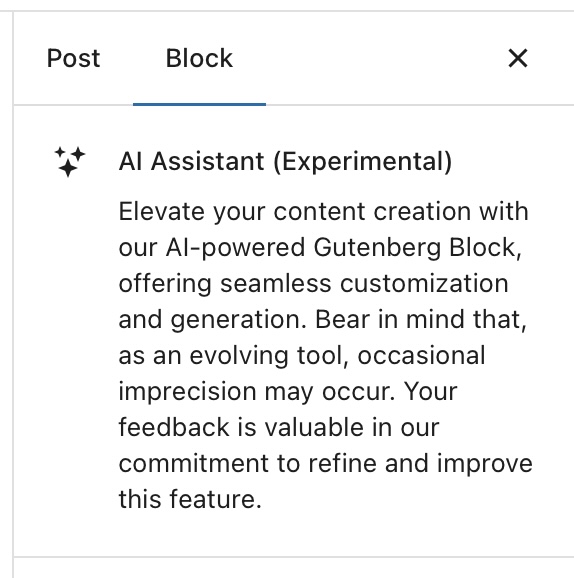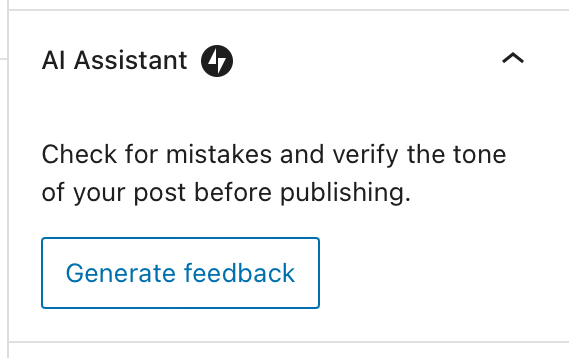5:03 am
Greetings from basement isolation. The dog has been let out and I’m back here in the dark. Instead of a specific topic, I want to catch up on some updates to past newsletters. So today’s note is a collection of smaller updates of different flavors. I’ll call it a smorgasboard, which of course Wikipedia has more info about than you probably ever cared to know! 
Now on to some updates about Humane’s Star Trek communicator pin, LEO satellites, streaming on Twitch, and more…
Humane’s AI Pin – the reality
While I wrote about how Humane’s AI Pin seemed to be getting us closer to the Star Trek (TNG) communicator, the Verge’s Victoria Song pointed out that a wearable device needs to … well… wearable! She noted that so many of the images show the pin being worn on outerwear .. but what happens when you go inside or want to take off that layer? And what are you going to wear it on in warmer climates or in summer weather?
She points out that it weighs about as much as a tennis ball! (Probably the batteries. ) And she points out how it will “drag” down a T-shirt or anything like that. She also notes that the current device has no water resistance – and also that we aren’t yet to the point of having social norms around talking to your devices.
) And she points out how it will “drag” down a T-shirt or anything like that. She also notes that the current device has no water resistance – and also that we aren’t yet to the point of having social norms around talking to your devices.
(Although I wonder if we are starting to get there… recently I’ve been around people who have quickly talked to their phones or watches to add a reminder or perform some action.)
Meanwhile, over on Business Insider, Jyoti Mann writes about how the AI Pin won’t help you message your friends faster:
- A video shared on X shows it took a user “6 pinches and 15 hand wiggles” to send a message.
- It took them 21 seconds to send the suggested text.
… with the comparison that this could have been done far faster on a smartphone.
Now some of this critique is just natural. You have a hyped-up launch… and then… no one can actually use one yet… so people will pick apart what they can. Part of it also is that we don’t really know how it might – or might not – fit into our daily lives. The use cases being discussed NOW might turn out not to be the common uses. And if it does have use, we’ll develop social norms around the use.
A number of years back if you saw someone walking along the road or a sidewalk seeming to be having a very animated conversation with themselves, we might have thought they had some mental health issues. Today we more often look to see if they have an earbud in and are in the middle of a voice call! 
And I completely agree with Victoria Song on the size. It’s going to need to be smaller and lighter before it might take off widely. (Just like VR goggles need to get smaller and lighter like the visor of Geordi La Forge on Star Trek:The Next Generation … hmm… noting a theme here..  )
)
She makes a really good point about outerwear, too. Of course in the fictional world of ST:TNG, the crew of the Enterprise was pretty much always in the Enterprise where they wore their uniforms, on which the communicator was fixed. Or if they went on a planet they seemingly never needed coats or spacesuits. So outerwear wasn’t an issue.
[Interestingly, I was thinking back to Babylon 5, my personal favorite sci-fi series of the 1990s, and their similar “link” bonded to the back of your hand (by some process that I never understood but hey… fiction!). Being on the hand, it didn’t have the issue of dealing with outerwear (which they did actually use!) or dragging down garments. Again, Victoria Song points out that wearables need to be wearable in many situations.]
It will be curious to see where this all goes. I think it’s great that Humane is exploring a new form factor. I expect we’ll see more commentary in 2024 when people actually start using them.
Sometime, before I leave this world, it would be fun to tap a device like this and call someone. (My initial temptation, of course, would be to say “Beam me up, Scotty!” even though I know that’s from the wrong Star Trek series!  )
)
Use of AI systems with Internet infrastructure?
Do any of you have good pointers to articles or research about various AI technologies being used either improve or disrupt Internet, network, and communications infrastructure?
I’ve seen mention of machine learning (ML) being used to optimize routing. Also seen mention of AI used for improving security (defense) – and improving attacks.
Anyone have good pointers to info about those kind of things? (And other ideas?) I’ve been doing searches, but it’s hard because of massive AI hype. Just curious for some research that I’m doing.
On a completely different topic about AI… if you have been following all of the OpenAI leadership drama over the past few weeks, Molly White (of “Web3 Is Going Just Great” fame) published a newsletter this morning about the difference between “effective altruism” and “effective acceleration” and how, ultimately, both are turning out to be more of the same.
LEO satellite systems and SpaceX launching
If you want to learn more about low Earth orbit (LEO) satellites like SpaceX’s Starlink, Eutelsat OneWeb, and Amazon’s Project Kuiper, I co-wrote a deep dive into the topic with Geoff Huston of APNIC in the September issue of the Internet Protocol Journal. Starting on page 31, it goes into great technical detail on a number of points. It’s a great companion to the Internet Society’s LEO perspectives document that provides a higher-level view.
Please do share the article with others who you think should know more about LEO systems for Internet access.
I also learned a lot from the “Introduction to 5G” article that was the first half of the IPJ edition.
Back on November 3, I wrote about SpaceX being the only launch provider consistently launching rockets. To that point, since the beginning of November, SpaceX has launched 8 rockets (not including their Starship launch). Of those:
- Five were Starlink launches
- One was a resupply mission to the International Space Station (which is in LEO)
- One was a “Transporter” mission that was a “rideshare” for small satellites. 90 payloads were deployed into LEO, out of which 110+ satellites were expected to be deployed.
- One was a launch of the final two O3b mPower satellites for medium Earth orbit (MEO) that SES needs to be able to provide almost-global Internet connectivity.
Eight production launches in about 3.5 weeks, plus the experimental Starship launch – no one else right now is capable of matching that launch cadence! Truly amazing work from the SpaceX teams. And so we as a society will continue to be so reliant on SpaceX until someone else can reach that kind of pace.
Streaming Wikipedia editing to Twitch
Back during the height of the pandemic when we were all stuck in our homes, I decided I wanted to dive deeper into Wikipedia editing (where I’ve been an editor for 19+ years)… and I also wanted to play with streaming to Twitch. So.. I started livestreaming my Wikipedia editing to Twitch! Every. Single. Day.  For well over a year.
For well over a year.
I haven’t done that streaming that much lately, but I’ve started getting back into it. If that sounds like something you’d like to see, you are welcome to follow me on Twitch to be notified when I do.
If on the other hand that sounds about as exciting as watching paint dry.. well… I completely understand! 
In all seriousness, though, if you ever have questions about Wikipedia in general, please feel free to email or otherwise contact me. It’s a personal passion of mine and I’m always glad to talk about all thing Wikipedia!
WebSummit: How to stop the Internet from unravelling
Finally, if you have 23 minutes, this video of a WebSummit panel includes Andrew Sullivan, President & CEO of the Internet Society (my employer) and Sally Costerton, Interim President and CEO of ICANN, tackling questions around Internet shutdowns, regulating the Internet, fragmentation, and how we need to protect and defend the way that the Internet actually works, versus the simplistic way that some policymakers would like it to work.
P.S. If you like what you hear from Andrew, we’re hiring at the Internet Society and Internet Society Foundation.
Thanks for reading to the end. I welcome any comments and feedback you may have.
Please drop me a note in email – if you are a subscriber, you should just be able to reply back. And if you aren’t a subscriber, just hit this button  and you’ll get future messages.
and you’ll get future messages.
This IS also a WordPress hosted blog, so you can visit the main site and add a comment to this post, like we used to do back in glory days of blogging.
Or if you don’t want to do email, send me a message on one of the various social media services where I’ve posted this. (My preference continues to be Mastodon, but I do go on others from time to time.)
Until the next time,
Dan
Connect
The best place to connect with me these days is:
- Mastodon: danyork@mastodon.social
You can also find all the content I’m creating at:
If you use Mastodon or another Fediverse system, you should be able to follow this newsletter by searching for “@crowsnest.danyork.com@crowsnest.danyork.com“
You can also connect with me at these services, although I do not interact there quite as much (listed in decreasing order of usage):
- LinkedIn: https://www.linkedin.com/in/danyork/
- Soundcloud (podcast): https://soundcloud.com/danyork
- Instagram: https://www.instagram.com/danyork/
- Twitch: https://www.twitch.tv/danyork324
- TikTok: https://www.tiktok.com/@danyork324
- Threads: https://www.threads.net/@danyork
- BlueSky: @danyork.bsky.social
Disclaimer
Disclaimer: This newsletter is a personal project I’ve been doing since 2007 or 2008, several years before I joined the Internet Society in 2011. While I may at times mention information or activities from the Internet Society, all viewpoints are my personal opinion and do not represent any formal positions or views of the Internet Society. This is just me, saying some of the things on my mind.

 Yes, indeed, after 1,350 days of being COVID-free (since the time of the WHO pandemic declaration), the day before US Thanksgiving I tested positive. It was not a huge surprise since my wife had been sick on the previous weekend and then tested positive on Sunday.. but we were hoping that I and our 14yo daughter would stay negative. Our daughter still IS negative, and so our focus is on keeping her that way. So my wife is staying in our second-floor bedroom, and I’m down in our basement. Our 14yo is spending most of her time in another room away from us.
Yes, indeed, after 1,350 days of being COVID-free (since the time of the WHO pandemic declaration), the day before US Thanksgiving I tested positive. It was not a huge surprise since my wife had been sick on the previous weekend and then tested positive on Sunday.. but we were hoping that I and our 14yo daughter would stay negative. Our daughter still IS negative, and so our focus is on keeping her that way. So my wife is staying in our second-floor bedroom, and I’m down in our basement. Our 14yo is spending most of her time in another room away from us.


 )
)




